biotechrabbit™ lyophilized CAPITAL 1-Step qRT-PCR Probe Master Mix is a freeze-dried version of the well-established liquid equivalent. The stabilized format allows shipment and storage without cooling. The master mix is optimized for real-time PCR quantification of RNA templates, including mRNA, total RNA and viral RNA from a wide range of targets. The mix ensures high specificity and sensitivity in single and multiplex detection, making it the choice for extremely low-copy-number targets in pathogen detection.
CAPITAL 1-Step qRT-PCR Probe Master Mix uses proprietary reverse transcriptase technology and buffer chemistry for efficient cDNA synthesis and QPCR in a single tube.
Info: Recommended annealing temperature is 2°C above primer Tm (use gradient PCR to optimize the annealing temperature).
Component | Composition |
Lyo CAPITAL qRT-PCR Probe Mix | Cake of 100 rxn lyophilized qRT-PCR Probe Master Mix |
qRT-PCR Probe Reconstitution Buffer | Optimized 5X PCR buffer for reconstituting lyophilized CAPITAL qRT-PCR Probe Mix |
LYO Master Mix RECONSTITUTION | 1) Transfer 400 µl of the 5X qRT-PCR Probe Reconstitution Buffer to one vial Lyo CAPITAL qRT-PCR Probe Mix. Discard the remaining overfill. |
STORAGE | Store at room temperature or below (until expiry date – see product label) |
Quality Control
Functional assay
Mix tested functionally in qRT-PCR.
Notes
- For efficient amplification under fast cycling conditions use amplicon lengths between 80 bp and 200 bp.
- The shorter the amplicon length the faster the reaction can be cycled. Use maximum 400 bp amplicons.
- Primers should have a predicted melting temperature of around 60°C, using default Primer 3 settings (http://frodo.wi.mit.edu/primer3/).
- For TaqMan® probes choose probe close to 5’ primer, avoid terminal guanosine residues.
Prevention of reaction contamination
RNase contamination is an exceptional concern when working with RNA. RNase A, providing most threat to RNA integrity, is a highly stable contaminant of any laboratory. To prevent RNA from degradation and to minimize possibility of contamination One Step RT-PCR; follow the guidelines below:
- Use separate clean areas for preparation of the samples and the reaction mixture.
- DEPC-treat all tubes and pipette tips or use certified nuclease-free labware with aerosol filters.
- Wear fresh gloves when handling RNA and all reagents.
- Always assess the integrity of RNA prior to RT-PCR in denaturing agarose gel electrophoresis.
- Use only water and reagents that are free of DNA, DNases and RNases.
- With every One Step RT-PCR setup, perform a contamination control reaction without template DNA.
Basic Protocol
- Keep the master mix protected from light until you use it.
- Aliquot the master mix to minimize freeze-thaw cycles and light exposure.
- Thaw on ice and mix very well all reagents. Assemble and keep all reactions on ice.
- Use only high quality optically clear reaction plates and seals designed for fluorescence applications.
- Do not use corner wells or use a more robust seal.
- Reserve plate positions for positive (control DNA) and negative (water or buffer) controls.
- First pipette the primer mixture, then add the template and last the Master Mix.
- Before preparing mixes, calculate the volume needed according to the reaction number plus one extra.
- To have a better correlation, run the reactions in triplets.
Component | Volume | Final concentration |
Primer Mix (Reverse and Forward) | Variable | 100–400 nM |
Too high primer concentrations result in unspecific amplification and should be avoided. | ||
Specific Probe | Variable | 200 nM |
Template RNA | Variable | 0.01 pg to 1 µg |
Use 1 pg – 1 µg Total RNA, or >0.01 pg mRNA | ||
5X CAPITAL 1-Step qRT-PCR Probe Master Mix (reconstituted lyophilisate) | 4 µl | 1× |
Nuclease free water | Variable |
|
Total volume | 20 µl |
|
- Gently mix the reactions without creating bubbles (do not vortex). Bubbles will interfere with fluorescence detection. Place the reaction into the PCR cycler.
Cycling Program
Step | Temperature | Time | Cycles |
Reverse Transcription | 50°C | 10 min | 1 |
Initial activation | 95°C | 3 min | 1 |
Denaturation | 95°C | 10 s | 40-45 |
Annealing/Extension* | (60-68°C)* | 30 s |
*Recommended annealing/extension temperature is primer Tm +2°C. Use gradient PCR to optimize the annealing temperature. Do not use temperatures below 60°C. Do not exceed 30 seconds.
For melt analysis refer to instrument instructions.
You may also be interested in the following product(s)
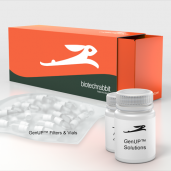
GenUP™ Plant RNA Kit
Package Sizes |
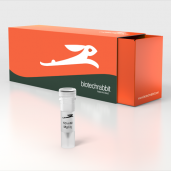
50 mM MgCl2
Package Sizes |
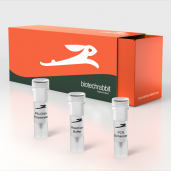
Pfu DNA Polymerase, 2.5 U/µl
Package Sizes |
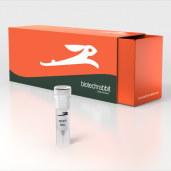
dNTP Mixes
Package Sizes |
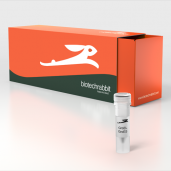
RTS GroE Supplement
Package Sizes |
